33 Types Of Dahlias: The Beautiful Flowers That Will Brighten Your Day
When it comes to brightening up your day, few flowers can match the beauty of dahlias. With over 350 varieties to choose from, each with its own unique characteristics and colors, there’s a dahlia out there for everyone.
In this article, we’ll delve into the different types of dahlias, including Cactus and Semi-Cactus Dahlias, Single Dahlias, Pompon Dahlias, Ball Dahlias, Decorative Dahlias, Mignon Dahlias, Anemone Dahlias, Peony Dahlias, Collarette Dahlias, Orchid Dahlias, and Waterlily Dahlias. We’ll also provide tips on how to care for these flowers so you can enjoy them for many weeks. If you’re looking to add some color and vibrancy to your garden or indoor space, look no further than dahlias.
How many different types of dahlias are there?
While the number of dahlia varieties might not be as staggering as the estimated 42,000 types, it’s still impressive that these flowers come in a vast array of colors, shapes, and sizes. The color palette is surprisingly diverse, with most dahlias sporting hues like pink, white, yellow, and red – although blue remains an elusive shade. Among the various shapes and sizes, cactus, ball, and pompon types tend to be the most popular.
What’s even more astonishing is that dahlias can range from a petite two inches in diameter to a show-stopping four feet in size, making them a true marvel of nature.
How to identify dahlias
Dahlias, a diverse group of flowers native to Mexico and Central America, have been captivating gardeners with their vibrant colors, unique shapes, and varied sizes since their introduction to Europe in the early 1800s. With over 40 species, dahlias are renowned for their stunning blooms, which come in an array of single and double flower forms, including cactus, ball, pompom, and waterlily shapes.
The petals can feature smooth or ruffled textures, and the flowers can be any color except blue, making each one a true marvel. Beyond their striking appearance, dahlias can also be identified by their distinctive leaves and roots. The leaves, typically dark green with a hairy or downy surface, are arranged in opposite pairs on the stem and feature a stalk (petiole) that attaches to the stem. Depending on the variety, dahlias can have either simple or compound leaves.
The tuberous roots of dahlias are another key characteristic. These thick, fleshy roots store food for the plant and can be replanted to grow new plants, making them a popular choice among gardeners seeking to propagate their favorite varieties.
Types Of Dahlias
Cactus and Semi-Cactus Dahlias.
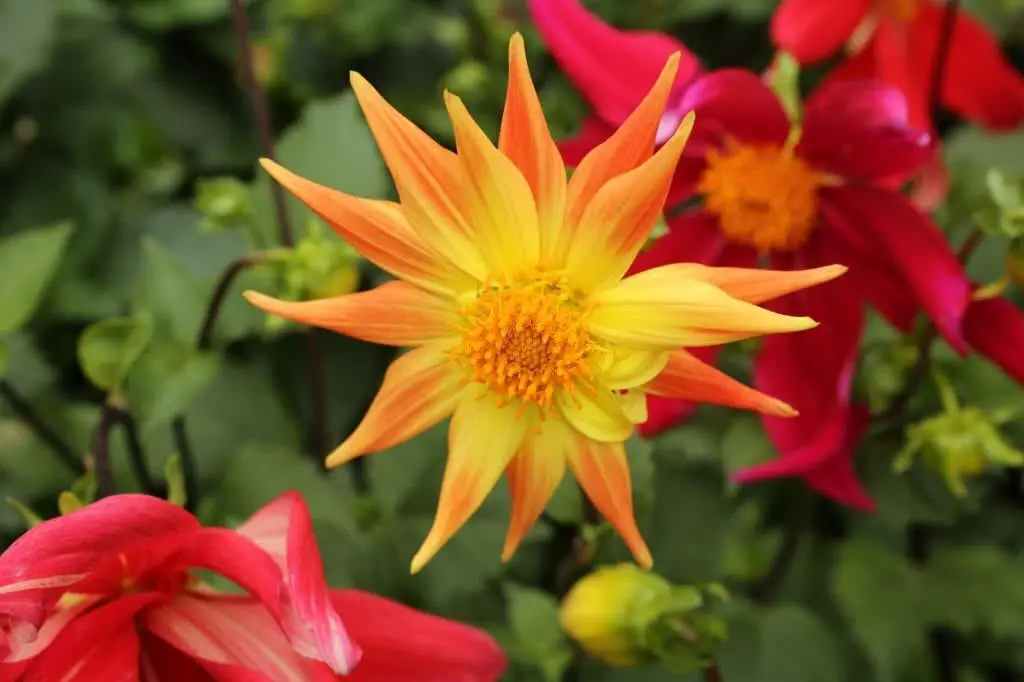
While dahlias come in a variety of forms, two distinct types stand out for their unique floral characteristics. The cactus dahlia boasts flattened blooms with textured, spiky petals, whereas the semi-cactus dahlia features softer, more traditional flower shapes with delicate petals. Both varieties exude beauty and possess their own inimitable charm. For a show-stopping addition to your garden, the cactus dahlia is an excellent choice. Its striking, spiky blooms are sure to turn heads.
If, however, you prefer a more classic floral aesthetic, the semi-cactus dahlia offers a softer, more subtle alternative that provides a delightful contrast to the boldness of the cactus dahlia.
Dahlia ‘Doris Day’.
Dahlia ‘Doris Day’ stands tall as a tuberous, herbaceous perennial, reaching heights of 24-36 inches. Its dark green foliage provides a striking backdrop for its vibrant pink flowers with sunny yellow centers. This charming variety is well-suited for adding a pop of color to borders, containers, and cutting gardens.
The story behind ‘Doris Day’ begins in the 1960s when renowned English nurseryman Ernest Ball introduced this variety, paying homage to the beloved American actress and singer Doris Day.
Dahlia ‘Pianella’.
In the world of dahlias, a new gem has emerged through the skillful crossing of ‘Fascination’ and ‘Bishop of Llandaff’. This hybrid boasts an impressive array of characteristics from its parent varieties. Its large, vibrant flowers display a deep red hue against a backdrop of rich green foliage, offering a stunning visual display. The plant’s compact, bushy habit makes it perfect for adding a pop of color to borders, beds, and containers.
What’s more, its strong stems ensure it can withstand the rigors of cutting, allowing you to enjoy its beauty indoors as well as outdoors. As a tuberous perennial, ‘Pianella’ will return year after year, only to improve in beauty with age. Its long flowering season, spanning from early summer through to the first frosts, means you’ll be treated to its vibrant blooms for an extended period.
Dahlia ‘Frigoulet’.
The dahlia ‘Frigoulet’ is a crowd-pleaser, boasting vibrant blooms with a deep, rich red hue and sunny yellow centers. Its striking appearance makes it an ideal addition to any garden or arrangement. As a tuberous plant, Frigoulet stores energy in underground bulbs, allowing gardeners in cooler climates to dig up the plants and bring them indoors over winter, ensuring their survival until the following growing season.
Single Dahlias.
There’s something undeniably charming about dahlias – their delicate beauty and effortless elegance make them a staple in many gardens during the summer months. If you’re seeking a flower that exudes refinement while being surprisingly low-maintenance, look no further than the single dahlia. This versatile bloom is available in a diverse range of colors and sizes, making it an ideal choice for any outdoor or indoor space.
Dahlia ‘Magenta Star’.

Boasting vibrant magenta blooms that are simply perfect for cut flower arrangements, this stunning dahlia is a must-have addition to any garden. Its showy flowers will undoubtedly bring a pop of color and vibrancy to any bouquet or centerpiece. To get the most out of this lovely plant, it’s essential to provide it with the right conditions. It thrives in full sun and well-drained soil, making it an excellent choice for gardens that experience hot, dry summers.
Plus, its natural drought tolerance means you can enjoy its beauty without worrying about frequent watering.
Dahlia ‘Mystic Illusion’.
Dahlia ‘Mystic Illusion’ is a standout variety that delights with its kaleidoscope of blooms, showcasing an impressive range of hues. The flowers can transition seamlessly from soft whites and pinks to bold reds and purples, making them truly unforgettable. One of the most notable features of this Dahlia is its lavish floral display, boasting large, full blooms that are simply begging to be cut and incorporated into stunning bouquets.
With its delicate petals and show-stopping colors, ‘Mystic Illusion’ has earned a special place in the hearts (and gardens) of flower enthusiasts everywhere.
Dahlia ‘Waltzing Mathilda’.
The captivating Dahlia ‘Waltzing Mathilda’ boasts an impressive display of large, dark green leaves and vibrant, deep red flowers that reach up to 12 cm in diameter. What’s more, these stunning blooms emit a wonderful fragrance, making this dahlia a fantastic choice for adding a pop of color and scent to your garden.
Pompon Dahlias.
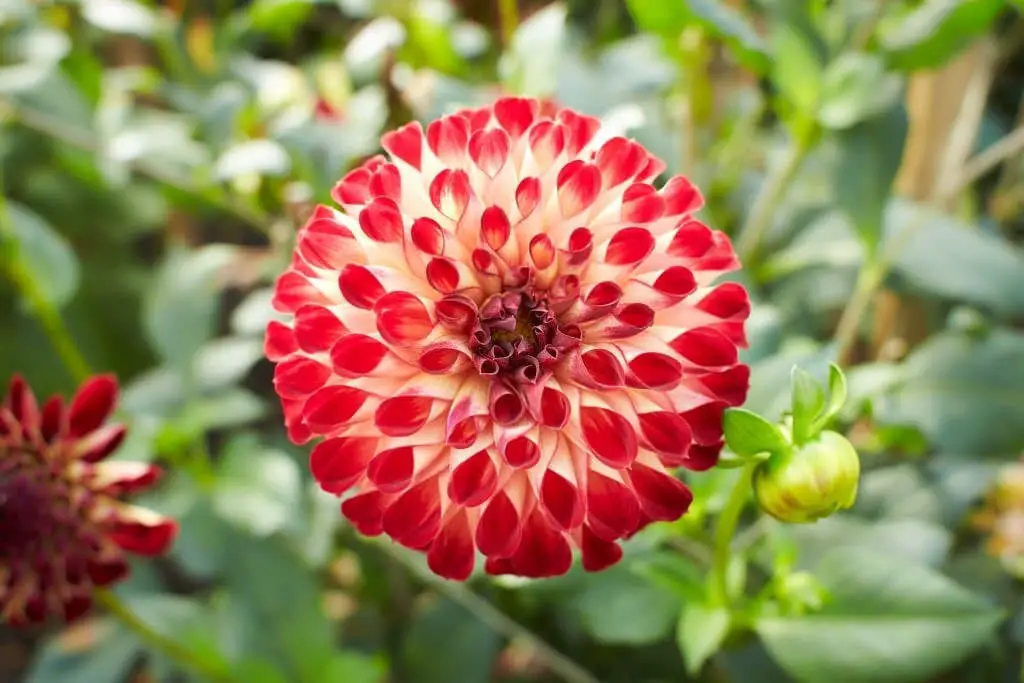
Pompon Dahlias have a rich history that spans centuries. These vibrant flowers have been around since the 16th century, originating from Mexico where they were first cultivated by Spanish missionaries. Interestingly, the species got its name from Anders Dahl, a Swedish botanist who was instrumental in their study and classification.
His dedication to understanding these beautiful blooms has left a lasting legacy, with Pompon Dahlias remaining one of the oldest and most beloved Dahlia varieties today.
Dahlia ‘Moor Place’.
A gem among dahlias, ‘Moor Place’ boasts stunning red blooms with a one-of-a-kind shape that can’t help but captivate the eye. When it comes to thriving, this variety excels in full sun and well-drained soil conditions. To promote healthy growth and encourage fresh flowers, be sure to deadhead regularly. For gardeners seeking to inject some visual flair into their outdoor spaces, ‘Moor Place’ is an excellent choice.
Dahlia ‘Plum Surprise’.
The Dahlia ‘Plum Surprise’ is a stunning variety that boasts vibrant, deep plum-hued blooms. Its flowers are generously sized and feature delicate ruffles on their petals, creating a striking display in the garden. With its dramatic flair, this dahlia is sure to captivate visitors and add a pop of color to your outdoor space.
Dahlia ‘Franz Kafka’.
Dahlia ‘Franz Kafka’ is a unique cultivar that pays homage to the renowned writer Franz Kafka. This stunning flower was created by expertly crossing two other Dahlia varieties, ‘Bishop of Llandaff’ and ‘Dahlia pinnata’, resulting in a distinctively deep reddish color with black spots. First introduced to the public in 2006, this striking plant reaches heights of around 60-90 cm (24-36 inches).
Its vibrant blooms emerge from July to September, making it a standout addition to any garden or arrangement.
Ball Dahlias.
Ball dahlias are a fan favorite among flower enthusiasts, and it’s easy to see why. Their showstopping blooms are not only visually stunning but also incredibly versatile, making them perfect for snipping and incorporating into beautiful bouquets. What’s more, this variety boasts an impressive color palette, with hues ranging from crisp white to vibrant pink, fiery red, and rich purple.
Dahlia ‘Aurora’s Kiss’.
Within the Asteraceae family, Dahlia ‘Aurora’s Kiss’ is a remarkable cultivar that stems from the hybridization of two Dahlia species. First introduced to the market in 2009, this tender perennial thrives as an annual in most climates. Standing tall at 24-36 inches, its double flowers boast a striking pink hue with vibrant purple streaks. The plant’s blooming period extends from mid-summer to fall, making it an excellent choice for cut flower arrangements.
To optimize growth, Dahlia ‘Aurora’s Kiss’ prefers full sun and well-drained soil conditions.
Dahlia ‘Jomanda’.
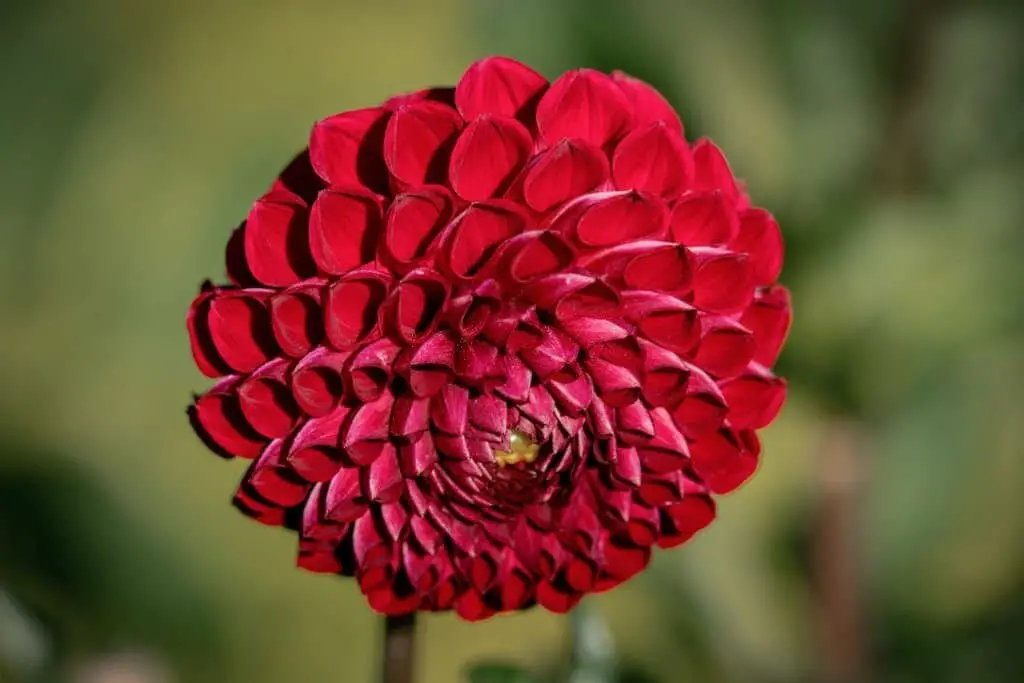
The Dahlia ‘Jomanda” stands out for its breathtaking beauty, boasting large, double blooms with a deep red hue that subtly shifts towards purple. This showstopper of a flower is an absolute must-have for any gardening enthusiast seeking to elevate their outdoor space’s aesthetic. With its rich heritage tracing back to Mexico and its introduction to Europe in the early 1800s, this Dahlia has evolved from being primarily ornamental to now being cherished as a popular garden bloom.
Adding ‘Jomanda’ to your garden will undoubtedly infuse it with an air of sophistication.
Dahlia ‘Cornell’.
Dahlia ‘Cornell” is a result of a cross-pollination between two Dahlia species: Dahlia coccinea and Dahlia pinnata. This hybrid was specifically bred at the Cornell University Agricultural Experiment Station in Ithaca, New York, United States. The tender perennial plant grows to a height of 30-36 inches (75-90 cm), boasting dark green leaves that provide a striking backdrop for its showy, orange-red flowers, which measure approximately four inches (ten cm) in diameter.
The blooms of Dahlia ‘Cornell” begin to appear from midsummer through fall, making them an excellent choice for cutting and using in arrangements or dried bouquets. For optimal growth, this Dahlia prefers full sun and moist, well-drained soil; it is not tolerant of drought or excessive moisture. Propagation can be achieved through division in either spring or fall.
Decorative Dahlias.
Dahlias, known for their vibrant colors, varied sizes, and unique shapes, are a popular choice for decorative arrangements. Originally hailing from Mexico and Central America, these ornamental plants have been delighting European audiences since the 18th century. With their showy blooms perfect for cutting gardens and dried flower arrangements, it’s no wonder dahlias have become a staple in many a gardener’s repertoire.
When it comes to growing dahlias, they thrive in full sun and well-drained soil. Consistent watering is also crucial to ensure these flowers reach their full potential. To further encourage blooming, gardeners can utilize fertilizers rich in phosphorus. By pinching back the tips of the plant, you’ll not only promote bushier growth but also increase the number of blooms. For those looking to multiply their dahlia collection, propagation via division or seed is a viable option.
Dahlia ‘Arabian Night’.
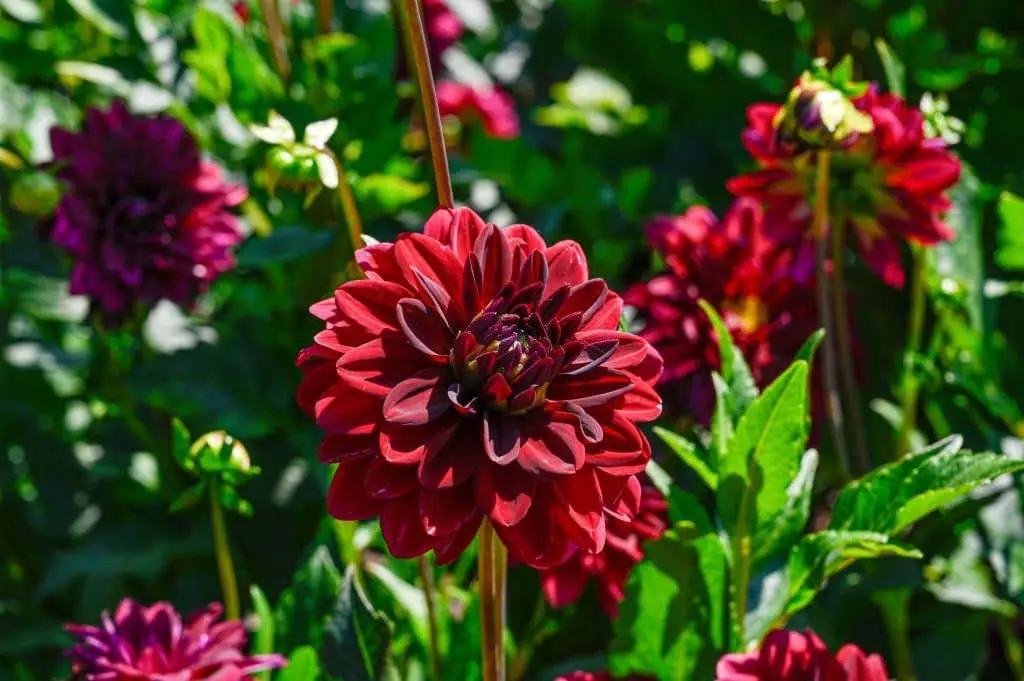
Dahlia ‘Arabian Night’ boasts a show-stopping appearance, boasting velvety black petals infused with rich purple undertones. Its striking beauty makes it an excellent choice for any garden, where its statement blooms will undoubtedly draw attention. Moreover, this variety has gained immense popularity as a cut flower, frequently adorning arrangements in florists and homes alike, showcasing its versatility.
Dahlia ‘Rothesay Reveller’.
The Dahlia ‘Rothesay Reveller’ is a showstopper, boasting lavish, fully double blooms in a rich, deep purple hue. These stunning flowers are borne on sturdy stems from mid-summer through late autumn, providing a vibrant splash of color and interest to borders and containers alike. Not only does this dahlia add a pop of color, but it also makes an excellent cut flower option.
Dahlia ‘Kelvin Floodlight’.
Dahlia ‘Kelvin Floodlight” stands out among other varieties with its impressive, attention-grabbing blooms. Measuring up to 12 inches in diameter, the striking red flowers of this annual plant are a true showstopper. While it may only bloom for one season, Dahlia ‘Kelvin Floodlight’ makes a lasting impression with its vibrant color and grandiose size.
Mignon Dahlias.
The Mignon Dahlia is a compact variety that stands out for its diminutive blooms. Its petite flowers have made it a sought-after choice for gardeners and florists alike. Originating in France during the early 19th century, this charming type of Dahlia has been delighting audiences with its versatility and charm.
One of Mignon Dahlias’ most notable features is its kaleidoscope of colors, which includes serene whites, soft pinks, rich purples, vibrant reds, and radiant yellows – ensuring that every arrangement or garden bed will be a visual treat.
Dahlia ‘Scura’.
In the realm of dahlias, ‘Scura’ stands out as a striking and dramatic cultivar. Its dark petals and deep red center create an eye-catching combination that’s sure to captivate anyone who lays eyes on it. This unique beauty thrives in full sun and well-drained soil, making it a relatively low-maintenance addition to any garden.
In fact, ‘Scura’ is a great choice for those seeking something outside the norm, as its bold appearance is sure to add visual interest to even the most established gardens.
Dahlia ‘G.F. Hemerik’.
Introduced by Dutch breeder G. F. Hemerik in 2004, Dahlia ‘G. F. Hemerik” boasts striking, deep red blooms with vibrant yellow stamens, all set against a backdrop of sturdy, upright stems that can grow up to 120cm (48in) tall and spread outwards by around 60cm (24in). The foliage is a beautiful shade of dark green, glistening in the light.
When planted in well-drained soil and full sun, this Dahlia variety thrives, making it an excellent choice for cut flower arrangements and adding a pop of colour to summer borders.
Dahlia ‘Sunshine’.
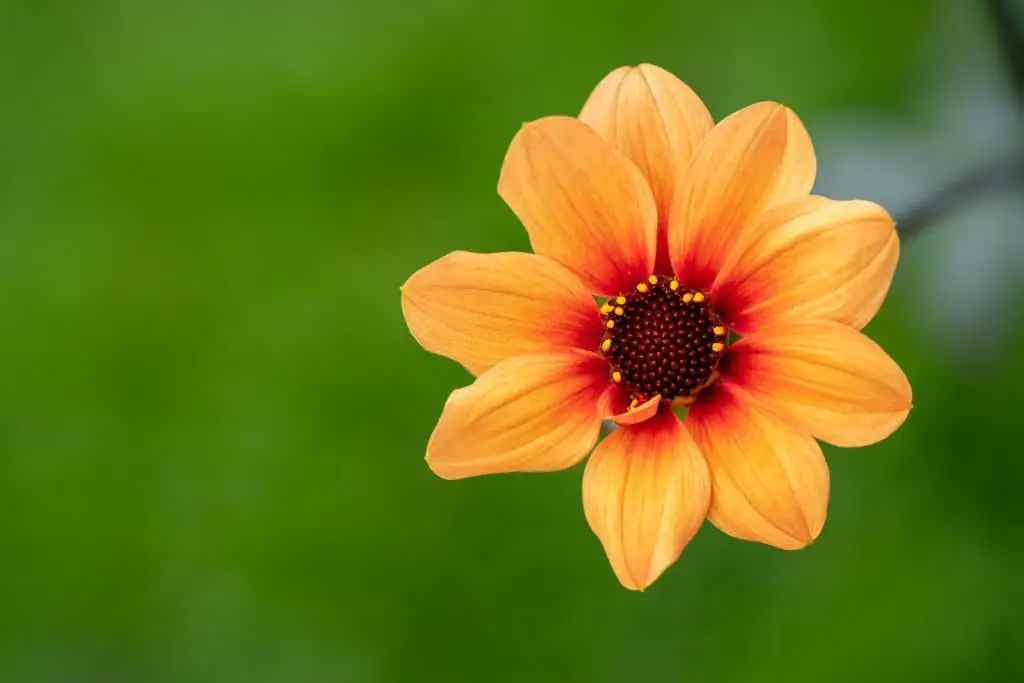
With its vibrant yellow petals, Dahlia ‘Sunshine” is an instant mood-booster for any garden. As a popular cut flower variety, it’s essential to deadhead the blooms regularly to encourage continuous flowering. Standing tall at around 36 inches and spreading out about 24 inches wide, this dahlia is well-suited for most gardens. While it thrives in full sun, some light shade won’t deter its growth either. Dahlias are generally low-maintenance and produce beautiful cut flowers.
If you’re seeking a cheerful addition to your garden’s landscape, Dahlia ‘Sunshine” is an excellent choice to brighten up the space.
Anemone Dahlias.
A genus comprising around 30 species of tuberous-rooted herbaceous perennials within the Asteraceae family, Anemone Dahlia is an endemic plant native to Mexico and Central America. The name ‘Anemone’ originates from the Greek term ‘anemos,’ meaning ‘wind.’ This popular garden plant boasts showy flowers that bloom during summer and autumn, featuring a vibrant spectrum of colors including white, pink, purple, red, and yellow.
nThe Anemone Dahlia is relatively straightforward to cultivate, allowing for propagation via division or seed. It thrives in sunny conditions with well-drained soil, making it an attractive addition to many gardens.
Dahlia ‘Purpinka’.
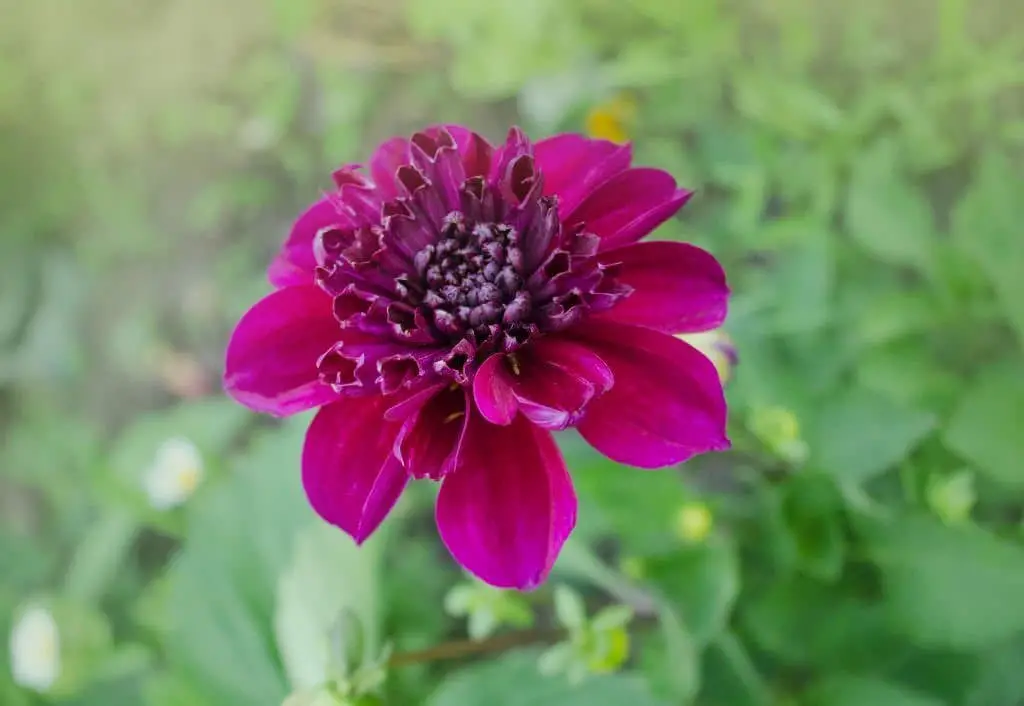
Meet the stunning ‘Gallery Art Deco’ x ‘Dalina Fuego’ dahlia hybrid, boasting breathtaking deep purple blooms that reach up to 12 cm in diameter and showcase a delightful ruffled texture. As an added bonus, these show-stoppers make exceptional cut flowers, effortlessly lasting up to two weeks when arranged in a vase.
Dahlia ‘Totally Tangerine’
The vibrant ‘Totally Tangerine’ dahlia boasts an exquisite orange hue, injecting a burst of color into your outdoor space or arrangements. Its carefree nature makes it an ideal addition to any garden, requiring little maintenance while still delivering a stunning visual impact.
Dahlia ‘Boogie Woogie’.
Jelitto Perennial Seeds, a German breeding program, brought forth the captivating ‘Boogie Woogie’ dahlia through its cross-pollination of Dahlia pinnata and Dahlia coccinea. This striking hybrid measures approximately 80 cm (31 in) in height and boasts showy, ruffled flowers with an intense magenta hue.
This vibrant bloom is ideal for adding a splash of color to summer gardens.
Its flowering period spans from June to September, making it an excellent choice for creating a stunning display during the warmer months. For optimal results, ‘Boogie Woogie’ should be planted in full sun.
Peony Dahlias.
Peony Dahlia is a unique hybrid, born out of the union between two dahlia species – Dahlia pinnata and Dahlia coccinea. This innovative creation dates back to 1872, when French horticulturist Victor Lemoine first cultivated it. The resulting blooms are truly striking, boasting a diameter of approximately 20 centimeters. These double flowers feature intricately arranged petals that spiral outward, adding to their visual allure.
Moreover, the Peony Dahlia’s flowers can be found in a range of hues, including white, pink, and red. In terms of its physical stature, the plant typically grows to a height of around 60 centimeters before reaching its peak bloom period from July to September.
Dahlia ‘Fascination’.
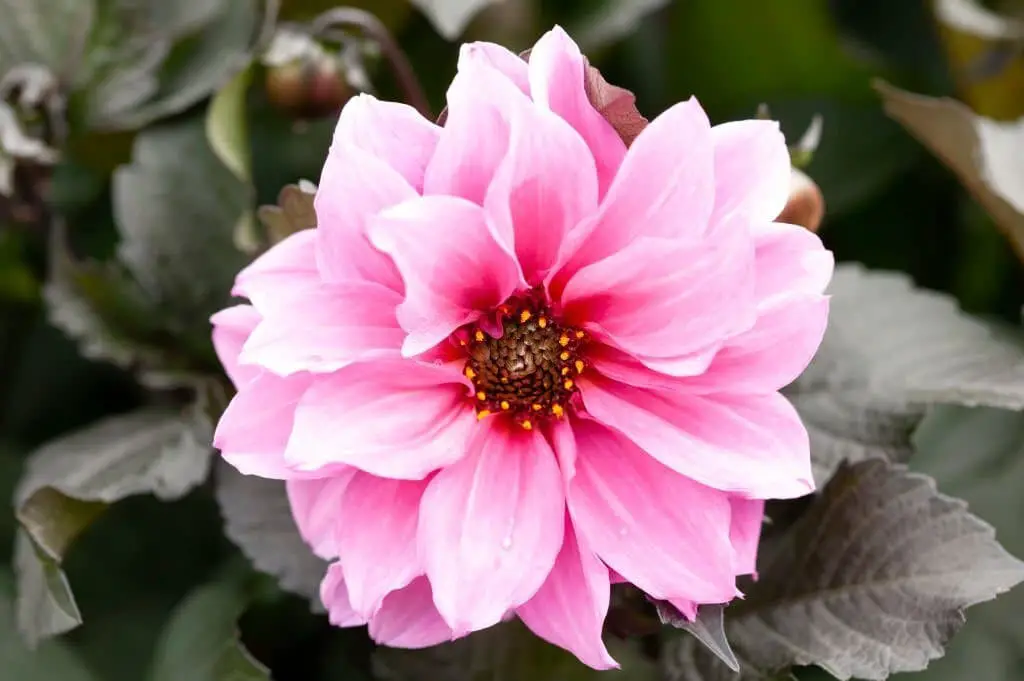
Dahlia ‘Fascination’ is a hybrid cultivar that emerged from the crossing of Dahlia pinnata and Dahlia rosea. This unique variety was introduced to Europe in 1872 by Georg Arends, a renowned German botanist and horticulturist. Characterized as a herbaceous perennial, it grows up to 0.75-0.95 meters (30-38 inches) tall and 0.45-0.60 meters (18-24 inches) wide. The plant’s foliage features jagged edges, while its flowers are borne on slender stems that stretch out from the main plant.
Dahlia ‘Bishop of Llandaff’.
Dahlia ‘Bishop of Llandaff’ holds a special place in the world of horticulture, its history dating back to the Victorian era when breeders were actively experimenting with this beloved flower. This particular variety is named after the renowned Bishop of Llandaff, who was a prominent figure in Dahlia cultivation during that time. The ‘Bishop of Llandaff’ boasts an impressive stature and striking appearance, featuring large, dark red petals with nearly black hues.
Its unique coloration makes it one of the most sought-after Dahlias among enthusiasts.
Despite its showy appearance, this Dahlia is surprisingly easy to grow and can thrive in less-than-ideal soil conditions. Furthermore, ‘Bishop of Llandaff’ makes a wonderful cut flower, boasting an impressive vase life that allows it to remain fresh for extended periods.
Dahlia ‘Bishop of Oxford’.
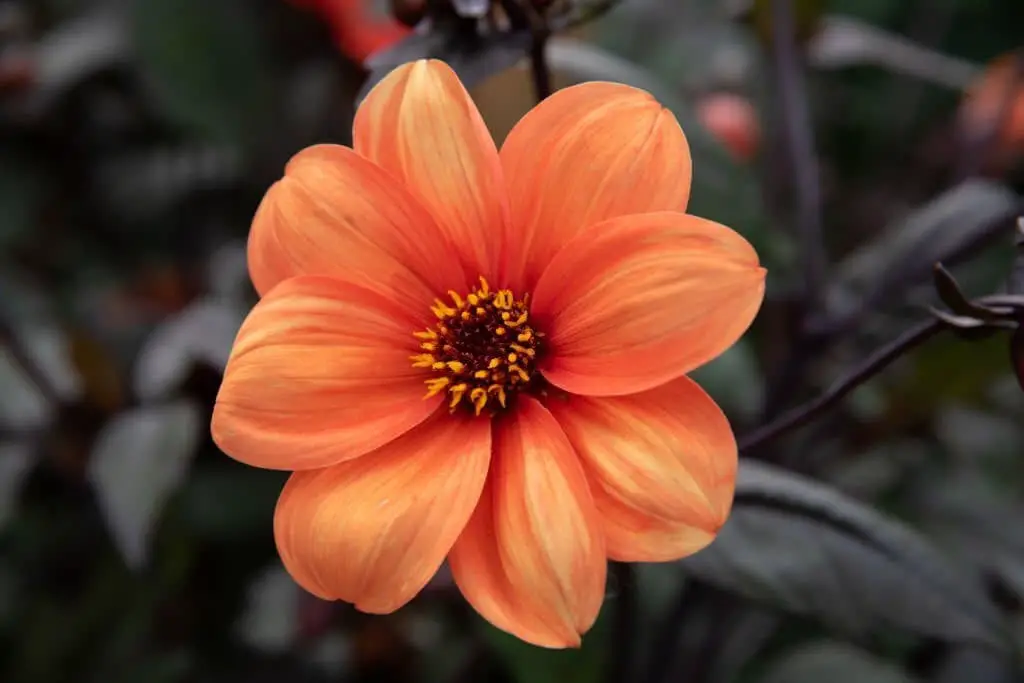
The ‘Bishop of Oxford’ Dahlia boasts stunning, dark red blooms that are truly a sight to behold. This captivating variety is not only a standout in any garden, but its large, showy flowers also make it an ideal choice for cutting and arrangements.
Collarette Dahlias.
Collarette Dahlia blooms boast a distinctive feature – a delicate ring of small florets surrounding the central portion, evoking the appearance of a ruffled collar. This ornamental flair is complemented by an impressive palette of colors, spanning white, warm yellow, soft pink, vibrant red, and regal purple hues. As for their physical stature, Collarette Dahlias typically reach heights of around two feet, with blooming seasons extending from July to October.
Dahlia ‘Teesbrooke Audrey’.
Dahlia ‘Teesbrooke Audrey” is an exquisite variety of Dahlia renowned for its stunning, large-scale blooms. Its double petals unfurl in a striking combination of deep pink hues and creamy white tips. This exceptional cultivar thrives in a compact yet impressive stature, reaching approximately 24 inches in height and 18 inches in width.
Dahlia ‘Pooh’.

Dahlia ‘Pooh’’ is one of the most sought-after varieties among gardening enthusiasts. Its striking deep red blooms with vibrant yellow tips are a stunning sight to behold. While dahlias originated in Mexico, they were first cultivated in Europe during the 18th century. Today, there are over 30 distinct species and hundreds of unique varieties to choose from.
With their diverse palette of colors – ranging from classic reds and pinks to purples, whites, and yellows – dahlias have become a top choice for both gardeners and florists seeking to add a pop of color to their arrangements. As a bonus, these showy flowers typically bloom from summer through fall, providing months of vibrant beauty in any outdoor or indoor setting.
Dahlia ‘Night Butterfly’.
Dahlia ‘Night Butterfly” is the result of a deliberate cross-pollination between two Dahlia species: D. coccinea and D. pinnata. This hybrid was first cultivated by German botanist Dr. Ernst Berndt in 1935, before being introduced to the United States by the Ball Seed Company the following year. The resulting plant grows to a height of 24-36 inches (60-90 cm), with green, lance-shaped leaves that provide a striking backdrop for its dark purple blooms featuring a bright white center.
These flowers burst forth from June to September, filling the air with vibrant color. As an added bonus, this Dahlia variety is remarkably easy to grow, thriving in full sun or partial shade and exceling in well-drained soil. Moreover, it has demonstrated impressive tolerance for heat and humidity, making it a resilient addition to any garden.
While it’s not frost-hardy, ‘Night Butterfly’ is an excellent choice for borders, mass plantings, or serving as a statement piece – its striking blooms also make it an attractive cut flower option.
Orchid Dahlias.
Orchid dahlias have long been admired for their exquisite beauty, captivating gardeners and flower enthusiasts alike. The dainty blooms and intricate petal details of this variety set it apart from others. Despite being less accessible commercially, the allure of growing one’s own orchid dahlia is undeniable. With a bit of dedication and persistence, cultivating these stunning flowers becomes a rewarding experience.
Dahlia ‘Honka Red’.
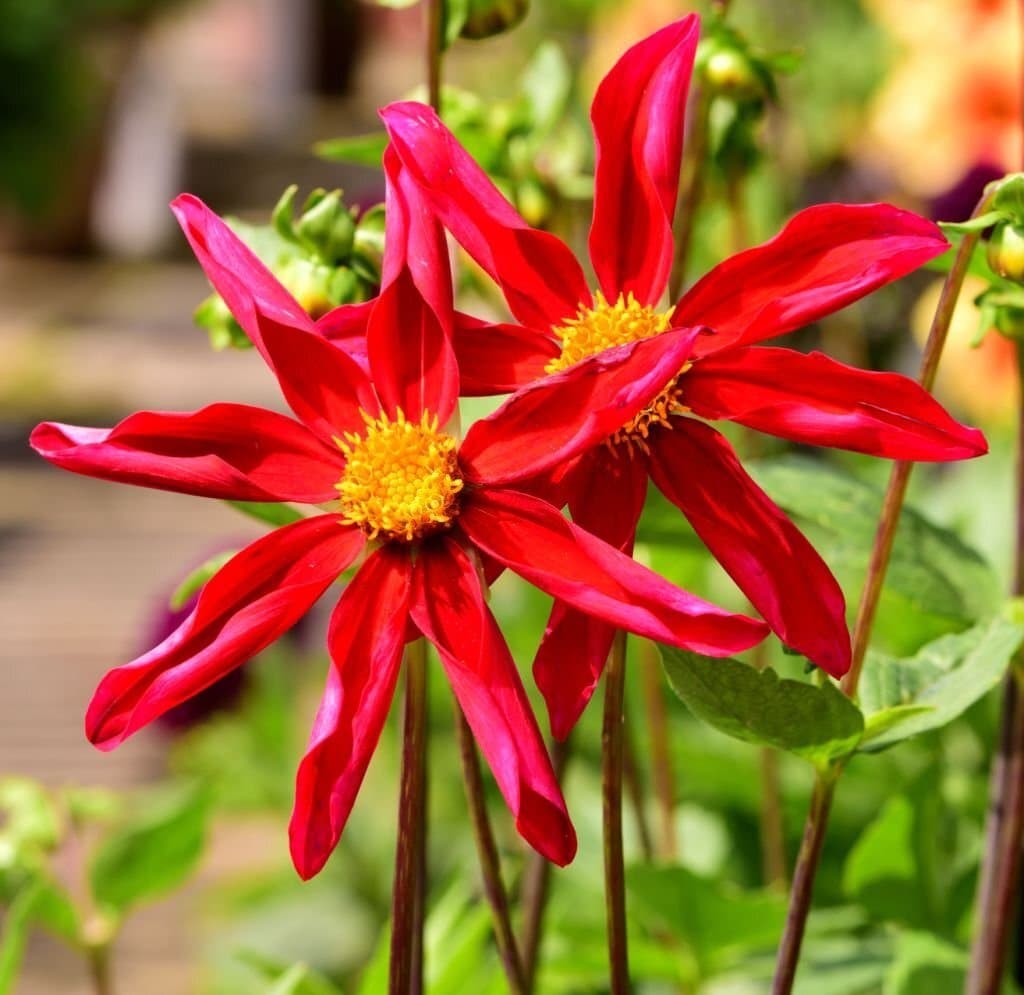
Dahlia ‘Honka Red’ is the result of a hybridization between Dahlia pinnata and Dahlia coccinea, two species native to Mexico. Finnish enthusiast Toivo Honkala played a key role in breeding this variety, which was later introduced to cultivation in the United States by John W. MacMillan in 1963. The plant typically reaches a height of around 90 cm (36 in) and is characterized by its striking flowers, which can measure up to 15 cm (approximately six inches) across.
These blooms are borne on slender stems and feature a deep red color with vibrant yellow highlights. Notably, the petals have a fringed appearance with a ruffled texture.
Dahlia ‘Fragile’.
With its dainty pink hue and fragile petal structure, Dahlia ‘Fragile” is an exquisite addition to any garden seeking a touch of refinement. The sweet fragrance that wafts from these blooms makes them a sought-after choice for cut flower arrangements as well. To cultivate this lovely variety, opt for a location bathed in full sunlight and ensure the soil drains effectively. As a low-maintenance plant, it’s surprisingly resilient to drought conditions too.
Still, to coax repeated blooming, be sure to deadhead the flowers at regular intervals.
Dahlia ‘Honka Surprise‘
Esa Honkakoski, a Finnish dahlia grower, pioneered the Dahlia ‘Honka Surprise’, a unique variety that has gained widespread popularity. Characterized by its pure white petals with striking red streaks, this Dahlia was introduced to the market in 2001. Since then, it has become a sought-after choice for gardeners and florists alike, who appreciate its striking appearance and versatility in arrangements.
Waterlily Dahlias.
Waterlily Dahlia blooms boast an impressive size, characterized by their flat shape and smooth petals that may feature subtle notches or ruffles. A vibrant palette of colors is on display, including white, yellow, pink, red, purple, and striking bi-color combinations. At the flower’s center, a multitude of small florets create a visually appealing contrast. To thrive, Waterlily Dahlias require full sun and well-drained soil. Once established, they are surprisingly drought-tolerant.
To encourage continued blooming, it’s essential to deadhead spent flowers, allowing the plants to redirect their energy towards producing more beautiful blooms.
Dahlia ‘Caballero’.
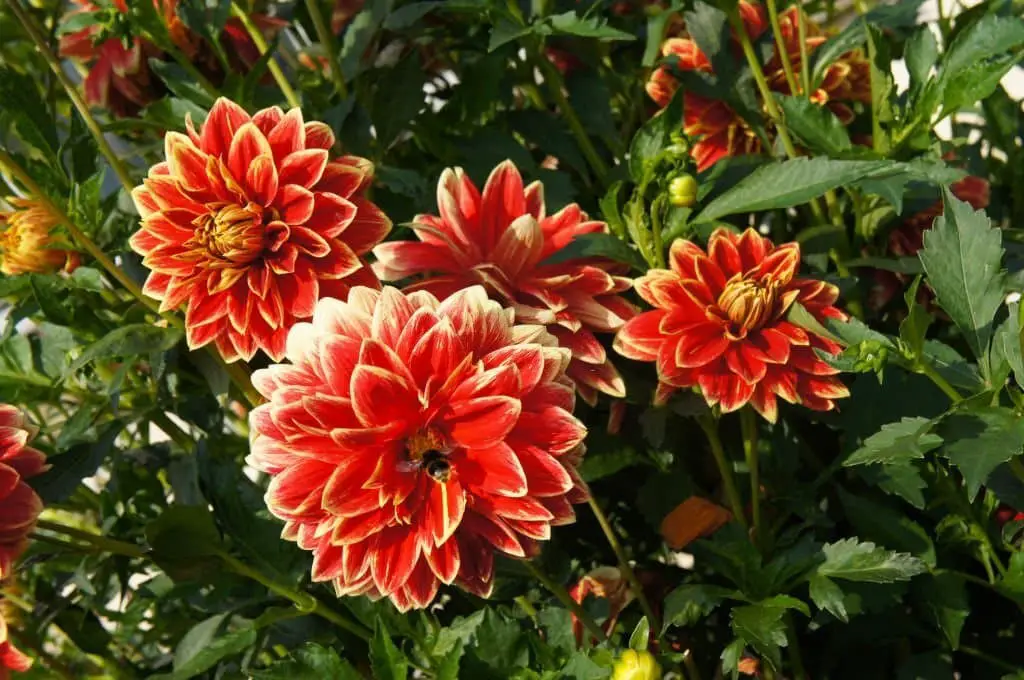
Dahlia ‘Caballero” is a striking deep red variety boasting ruffled petals, its beauty stemming from the 1945 introduction by the Caballero Brothers of Spain, an heirloom legacy. This showstopping Dahlia reaches heights of 24-36 inches and produces blooms from July to September, making it a vibrant addition to any summer garden. To reap maximum floral rewards, plant ‘Caballero’ in full sun in well-drained soil and be sure to deadhead spent blooms to encourage continuous flowering.
Dahlia ‘Karma Choc’.
The latest addition to the esteemed Karma series is Dahlia ‘Karma Choc’’, boasting an unparalleled level of drama with its rich, dark chocolate brown petals that seem almost black at their centers. This exceptional variety’s striking appearance makes it a standout in mass plantings, harmoniously blending with other blooms in mixed borders and containers alike.
Its impressive cut flower credentials are also worth mentioning, as the long-lasting blooms continue to thrill and impress for days to come.
Dahlia ‘Pearl of Heemstede’.
The captivating Dahlia ‘Pearl of Heemstede’ boasts a striking white bloom with a vibrant yellow center, resulting from its hybridization with ‘Bishop of Llandaff’. Introduced by Kees van der Weijden in 2006, this Dutch delight measures 50-60 cm (20-24 in) tall and 30-40 cm (12-16 in) wide. Its dark green foliage provides a stunning backdrop for the flowers that bloom from June to September. With a diameter of approximately 12 cm (five inches), these showstoppers are sure to draw attention.
As a hardy variety, ‘Pearl of Heemstede’ thrives in USDA zones seven through ten. It’s an excellent choice for adding a pop of color to borders, containers, or cut flower arrangements. To get the best out of this beauty, provide it with full sun and well-drained soil – it’s surprisingly drought-tolerant and doesn’t require excessive fertilizer.
FAQs
Which dahlias are most hardy?
When it comes to determining the most hardy dahlias, there are numerous factors to take into account.
However, if I had to provide a general answer, I would recommend considering the following varieties: ‘Bishop of Llandaff’, which is renowned for its exceptional resilience; ‘Cafe au Lait’ and ‘Dalmatian Prince’, both of which have proven themselves to be highly adaptable; ‘David Howard’, known for its impressive ability to thrive in a wide range of conditions; ‘Karma Choc’, ‘Phyllis Bide’, and ‘Raspberry Ripple’, each with their own unique characteristics that make them well-suited to withstand various environmental factors.
These dahlias have consistently demonstrated an ability to weather the challenges of nature, making them top contenders for those seeking hardy plants.
What is the earliest blooming dahlia?
Two of the earliest blooming dahlias are ‘Bishop of Llandaff’ and ‘Duchess of Edinburgh’. The Bishop of Llandaff begins to bloom in early summer, typically around June, while the Duchess of Edinburgh starts flowering a bit earlier, in late spring or early summer, usually around May or June. Both varieties are favored by gardeners due to their prolonged blooming periods and ability to thrive in conditions characterized by heat and drought.
What is the rarest dahlia?
In a rare phenomenon, the blue dahlia stands out as the most elusive variety of this stunning flower. Its scarcity is so great that it can only be found in a single location on the planet – the Andes Mountains in South America. As a symbol of love and beauty, the blue dahlia is steeped in romance, with legend having it that those who stumble upon one will be granted good fortune.
Is dahlia hardy perennial?
While dahlias are not classified as hardy perennials, they do fall under the category of annuals or biennials, which means their lifespan typically spans no more than two years. Yet, with suitable care, it’s common for these flowers to outlive this predicted duration. For regions with harsh winters, a crucial step in preserving dahlias is to carefully dig them up and store them indoors during the winter months, ensuring they remain healthy and ready to thrive once again come spring.
How long will dahlias last?
While dahlias are renowned for their stunning beauty and ability to brighten up any space, they don’t possess an endless lifespan. The duration of their vibrancy largely depends on the type of dahlia, ranging from a few days to several months. To provide insight into the longevity of your dahlias, here’s a comprehensive guide. Cut dahlias typically have a shorter shelf life, as they’re severed from their food source – the stem.
To prolong their freshness, it’s crucial to place them in water promptly and change the water daily. This simple step can significantly extend their lifespan. In contrast, potted dahlias benefit from being connected to their root system, allowing them to thrive for a longer period. However, they still require regular watering and maintenance. When the flowers begin to wilt, you can carefully trim them off, which will encourage the plant to continue growing.
Dahlias planted in the ground have the potential to last even longer, thanks to their unlimited access to nutrients. Nevertheless, they’re more vulnerable to environmental factors like extreme temperatures, weather conditions, and pests. In the event of an unusually hot or cold summer, your dahlias might not endure as long as expected. To ensure the longevity of your dahlias, it’s essential to provide them with a suitable environment.
Keep them away from drafts, direct sunlight, and maintain vigilance for any signs of pests. By following these simple guidelines and demonstrating proper care, you can help extend the life of your dahlias.
Do dahlias like sun or shade?
The intricacies surrounding dahlias’ sunlight needs often leave many garden enthusiasts perplexed. While they do require a considerable amount of sunlight to flourish and produce an abundance of blooms, a degree of tolerance for shade also exists. The crux lies in identifying the specific type of dahlia you’re working with and its corresponding sun or shade requirements.
If your dahlia is classified as a ‘light’ or ‘partial’ sun plant, it will necessitate at least four hours of direct sunlight each day. Conversely, if you reside in an area plagued by scorching summers, providing these plants with some respite from the heat in the form of afternoon shade becomes crucial to prevent damage.
Conclusion
As we’ve explored the various types of dahlias, it’s clear that each one is a unique and stunning gem. Whether you’re looking to add some vibrancy to your garden or simply want to brighten up your day, there’s a dahlia out there to delight. From their intricate petals to their bold colors, these flowers are sure to capture your attention. If you’ve had the pleasure of encountering a dahlia before, we’d love to hear about it in the comments below!
Share with us what type you saw and let’s continue the conversation.
Related Posts
When it comes to flower delivery, do you know if you should tip your floral courier? Understanding gratuities for your local florist or online ordering service is crucial. On the other hand, are you struggling to identify weeds with yellow flowers in your garden? Or perhaps you’re seeking advice on how to grow and care for an African violet plant?
In this section of our blog, we’ll be exploring various topics such as colorful perennials for partial shade gardens or containers, Astilbe plant profiles and tips for growing a lush shade garden, and top ten shade perennials for a cold climate. Whether you’re looking to brighten up your garden corners with flowering perennial Astilbe or wanting to remove pesky weeds with yellow flowers, we’ve got you covered.






